- Clone
- CD7-6B7 (See other available formats)
- Regulatory Status
- RUO
- Workshop
- IV T-164
- Other Names
- gp40
- Isotype
- Mouse IgG2a, κ
- Barcode Sequence
- TGGATTCCCGGACTT
- Ave. Rating
- Submit a Review
- Product Citations
- publications
CD7 is a 40 kD type I transmembrane glycoprotein also known as gp40. It is a member of the immunoglobulin superfamily found on T cells, NK cells, thymocytes, hematopoietic progenitors, and monocytes (weakly). CD7 is also expressed on acute lymphocytic leukemia (ALL) and some acute myeloid leukemia (AML) cells. CD7 crosslinking induces a calcium flux in T lymphocytes, presumably as a result of cytoplasmic domain association with PI3-kinase. CD7 costimulation can induce cytokine secretion and modulate cellular adhesion.
Product DetailsProduct Details
- Verified Reactivity
- Human
- Antibody Type
- Monoclonal
- Host Species
- Mouse
- Immunogen
- KG1a cell line
- Formulation
- Phosphate-buffered solution, pH 7.2, containing 0.09% sodium azide and EDTA
- Preparation
- The antibody was purified by chromatography and conjugated with TotalSeq™-D oligomer under optimal conditions.
- Concentration
- 0.5 mg/mL
- Storage & Handling
- The antibody solution should be stored undiluted between 2°C and 8°C. Do not freeze.
- Application
-
PG - Quality tested
- Recommended Usage
-
Each lot of this antibody is quality control tested by immunofluorescent staining with flow cytometric analysis and the oligomer sequence is confirmed by sequencing. TotalSeq™-D antibodies are compatible with Mission Bio’s Tapestri Single-Cell Sequencing Platform for simultaneous detection of DNA and Protein.
To maximize performance, it is strongly recommended that the reagent be titrated for each application, and that you centrifuge the antibody dilution before adding to the cells at 14,000xg at 2 - 8°C for 10 minutes. Carefully pipette out the liquid avoiding the bottom of the tube and add to the cell suspension. For Proteogenomics analysis, the suggested starting amount of this reagent for titration is ≤ 1.0 µg per million cells in 100 µL volume. Refer to the corresponding TotalSeq™ protocol for specific staining instructions.
Buyer is solely responsible for determining whether Buyer has all intellectual property rights that are necessary for Buyer's intended uses of the BioLegend TotalSeq™ products. For example, for any technology platform Buyer uses with TotalSeq™, it is Buyer's sole responsibility to determine whether it has all necessary third party intellectual property rights to use that platform and TotalSeq™ with that platform. - Application Notes
-
Additional reported (for the relevant formats) applications include proteogenomics2.
- Additional Product Notes
-
TotalSeq™-D reagents are designed to profile protein expression at single cell level. The Mission Bio Tapestri platform and sequencer (e.g. Illumina analyzers) are required. Please contact technical support for more information, or visit biolegend.com/totalseq/single-cell-dna
The barcode flanking sequences are CGAGATGACTACGCTACTCATGG (PCR handle), and GAGCCGATCTAGTATCTCAGT*C*G (capture sequence). * indicates a phosphorothioated bond, to prevent nuclease degradation.
View more applications data for this product in our Application Technical Notes. -
Application References
(PubMed link indicates BioLegend citation) -
- Knapp W, et al. 1989. Leucocyte Typing IV:White Cell Differentiation Antigens. Oxford University Press.
- Peterson VM, et al. 2017. Nat. Biotechnol. 35:936. (PG)
- RRID
-
AB_2892413 (BioLegend Cat. No. 343133)
Antigen Details
- Structure
- Ig superfamily, type I transmembrane glycoprotein, 40 kD
- Distribution
-
T cells, NK cells, thymocytes, hematopoietic progenitors, myeloid leukemic cell subsets
- Function
- T cell activation
- Ligand/Receptor
- Cytoplasmic domain associates with P13-kinase
- Cell Type
- Hematopoietic stem and progenitors, Leukemia, NK cells, T cells, Thymocytes
- Biology Area
- Costimulatory Molecules, Immunology
- Molecular Family
- CD Molecules
- Antigen References
-
1. Barclay N, et al. 1993. The Leucocyte Antigen FactsBook. Academic Press Inc. San Diego.
2. Stillwell R, et al. 2001. Immunol. Res. 24:31.
3. Rabinowich H, et al. 1994. J. Immunol. 152:517. - Gene ID
- 924 View all products for this Gene ID
- UniProt
- View information about CD7 on UniProt.org
Related FAQs
Other Formats
View All CD7 Reagents Request Custom ConjugationCompare Data Across All Formats
This data display is provided for general comparisons between formats.
Your actual data may vary due to variations in samples, target cells, instruments and their settings, staining conditions, and other factors.
If you need assistance with selecting the best format contact our expert technical support team.
-
Purified anti-human CD7
-
FITC anti-human CD7

Human peripheral blood lymphocytes stained with mouse IgG2a,... 
Human peripheral blood lymphocytes stained with CD7-6B7 FITC... -
PE anti-human CD7
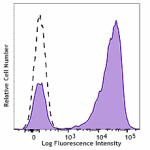
Human peripheral blood lymphocytes stained with CD7 (clone C... -
APC anti-human CD7

Human peripheral blood lymphocytes stained with CD7 (clone C... -
PE/Cyanine5 anti-human CD7

Human peripheral blood lymphocytes stained with CD7-6B7 PE/C... -
PE/Cyanine7 anti-human CD7
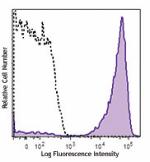
Human peripheral blood lymphocytes were stained with CD7 (cl... -
Purified anti-human CD7 (Maxpar® Ready)
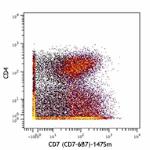
Human PBMCs stained with 145Nd-anti-CD4 (RPA-T4) and 147Sm-a... -
PerCP/Cyanine5.5 anti-human CD7
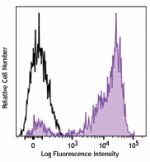
Human peripheral blood lymphocytes were stained with CD7 (cl... -
PE/Dazzle™ 594 anti-human CD7
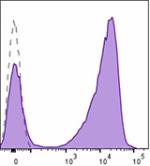
Human peripheral blood lymphocytes were stained with CD7 (cl... -
APC/Fire™ 750 anti-human CD7
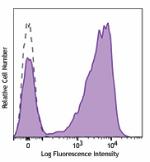
Human peripheral blood lymphocytes were stained with CD7 (cl... -
APC anti-human CD7
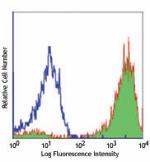
Typical results from human peripheral blood lymphocytes stai... -
FITC anti-human CD7

Typical results from human peripheral blood lymphocytes stai... -
Alexa Fluor® 647 anti-human CD7

Human peripheral blood lymphocytes were stained with CD7 (cl... -
TotalSeq™-A0066 anti-human CD7
-
Alexa Fluor® 700 anti-human CD7
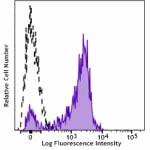
Human peripheral blood lymphocytes were stained with CD7 (cl... -
TotalSeq™-C0066 anti-human CD7
-
PE anti-human CD7

Typical results from human peripheral blood lymphocytes stai... -
TotalSeq™-B0066 anti-human CD7
-
Pacific Blue™ anti-human CD7 Antibody
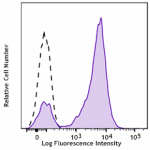
Human peripheral blood lymphocytes were stained with anti-hu... -
TotalSeq™-D0066 anti-human CD7
-
GMP APC anti-human CD7
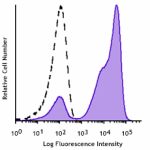
Typical results from human peripheral blood lymphocytes stai... -
GMP FITC anti-human CD7
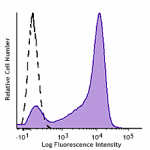
Typical results from human peripheral blood lymphocytes stai... -
PE/Cyanine7 anti-human CD7

Typical results from human peripheral blood lymphocytes stai... -
Pacific Blue™ anti-human CD7
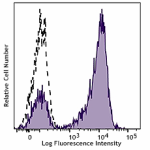
Typical results from human peripheral blood lymphocytes stai... -
GMP PE anti-human CD7
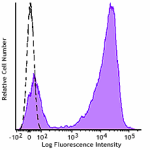
Typical results from human peripheral blood lymphocytes stai... -
PE/Dazzle™ 594 anti-human CD7
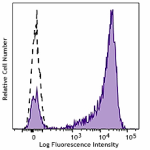
Typical results from human peripheral blood lymphocytes stai... -
GMP PE/Cyanine7 anti-human CD7
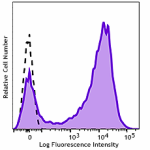
Typical results from human peripheral blood lymphocytes stai... -
GMP Pacific Blue™ anti-human CD7
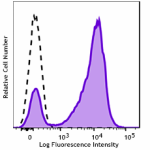
Typical results from human peripheral blood lymphocytes stai... -
Spark NIR™ 685 anti-human CD7

Human peripheral blood lymphocytes were stained with anti-hu... -
GMP PE/Dazzle™ 594 anti-human CD7

Typical results from human peripheral blood lymphocytes stai...













Follow Us